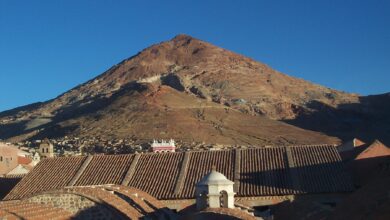Bolivia’s Quinoa Boom: From Ancient Staple to Global Superfood Odyssey

Once a humble Andean grain, quinoa has undergone a remarkable transformation, soaring from the rugged mountain slopes of Bolivia to the well-stocked shelves of supermarkets worldwide. This ascent to superfood status has dramatically reshaped the landscape for Bolivian farmers and communities, leaving a trail of opportunity and challenge. This feature delves into the intricate story of quinoa, exploring its historical significance, meteoric rise in international markets, and multifaceted impact on Bolivian agriculture, economy, and culture.
Long before the whispers of “superfood” reached Andean ears, quinoa thrived in the harsh yet nourishing embrace of the high altitudes. Cultivated for millennia by indigenous communities, it earned the revered title of “isphu,” translating to “mother grain” in the Aymara language. Its resilience mirrored the spirit of the people who nurtured it, providing essential sustenance for the Inca Empire and countless civilizations. Quinoa wasn’t just sustenance; it was woven into the tapestry of Andean life, prominently featured in religious ceremonies, traditional festivals, and everyday meals, symbolizing life, strength, and prosperity.
The Seeds of Global Recognition are Sown
In the late 20th century, we witnessed the planting of the seeds for global recognition of quinoa. Its unique nutritional profile, boasting an impressive array of complete proteins, essential minerals, and a remarkable amino acid balance, caught the attention of health experts and Western consumers. Its versatility in various cuisines, seamlessly weaving into salads, soups, breakfast bowls, and even gluten-free alternatives, further fueled its appeal.
The Boom Takes Root, Transforming the Bolivian Landscape
In the first decade of the 21st century, we have witnessed the actual explosion of quinoa’s popularity. International demand skyrocketed, transforming the Bolivian agricultural landscape at an unprecedented pace. Once cultivated primarily for local consumption, quinoa fields expanded rapidly, becoming dominant in many regions, particularly the Altiplano, the high plateau region straddling Bolivia, Peru, Chile, and Argentina. This rapid expansion painted the landscape in hues of golden yellow, a stark contrast to the traditional patchwork of crops.
A Double-Edged Sword: Impact on Bolivian Farmers
The quinoa boom presented a double-edged sword for Bolivian farmers. Increased demand translated into higher incomes, alleviating poverty and improving the livelihoods of many families. Farmers saw an opportunity to tap into global trade networks, forge new connections, and access previously unimaginable markets. However, the rapid rise in demand also brought unforeseen challenges.
The pressure to meet international quotas often led to changes in traditional farming practices. Monoculture farming, cultivating a single crop extensively, became more prevalent, raising concerns about soil degradation and unsustainable water use. Additionally, the delicate balance of the Andean ecosystem faced potential threats as the demand for land suitable for quinoa cultivation increased.
Furthermore, the global market’s inherent volatility posed a constant threat. Fluctuations in international prices and competition from other quinoa-producing countries, like Peru and Ecuador, introduced an element of uncertainty into farmers’ lives. The dream of economic prosperity could quickly become financial instability, leaving some farmers vulnerable to exploitation and the harsh realities of a globalized market.
Economic Repercussions: A Nation Transformed
Quinoa’s global appeal has significantly impacted Bolivia’s economy. Exports soared, generating much-needed foreign currency and contributing to GDP growth. The quinoa boom also created new jobs in the processing, transportation, and export sectors, injecting dynamism into the previously agrarian economy. However, concerns still need to be addressed regarding the long-term sustainability of relying heavily on a single commodity for national economic growth.
Diversifying agricultural production and fostering value-added industries related to quinoa could mitigate potential risks associated with fluctuations in the global market. Investing in research and development could lead to innovative processing techniques, allowing Bolivia to move beyond simply exporting raw quinoa and capturing a more significant market share by offering finished products like quinoa flour, pasta, and protein bars.
Beyond Economics: Cultural and Social Considerations
The global recognition of quinoa has also ignited discussions about cultural appropriation and the commodification of traditional foods. While the economic benefits are undeniable, it is crucial to recognize the cultural significance of quinoa for indigenous communities. The inherent knowledge and traditional practices associated with quinoa cultivation have been passed down through generations, forming an integral part of their cultural identity.
Therefore, ensuring that benefits are shared equitably within local communities and that cultural heritage is preserved is essential. Initiatives supporting community-based ownership of agricultural production, fair-trade certifications, and programs promoting the cultural significance of quinoa and its economic value can play a crucial role in achieving this balance.
Environmental Concerns: Balancing Growth with Sustainability
The rapid expansion of quinoa cultivation has raised concerns about its environmental impact. Increased water usage, soil depletion due to monoculture farming, and chemical fertilizers pose potential threats to the delicate ecosystems of the Andean region. The fragile balance between economic development and environmental sustainability necessitates a multi-pronged approach.
Sustainable farming practices, such as crop rotation, organic farming methods, and water conservation techniques, are crucial to ensure the long-term viability of quinoa production and protect the environment. This requires collaborative efforts from various stakeholders, including government agencies, research institutions, non-profit organizations, and farmers. Certifications like organic and fair trade can incentivize adopting sustainable practices while ensuring more equitable compensation for farmers.
The Future of Quinoa: Embracing Innovation and Responsibility
The future of quinoa in Bolivia hinges on striking a delicate balance between economic success, environmental sustainability, and cultural sensitivity. Continued innovation in agricultural practices and investments in research and development can help Bolivia maintain its competitive edge in the global market while ensuring responsible and sustainable production. Additionally, fostering strong relationships with international consumers, built on transparency and fair trade practices, can ensure that the benefits of quinoa are shared equitably, allowing both Bolivian farmers and global consumers to enjoy this nutritious and versatile grain for generations to come.
Also read: Bolivia Confirms First Measles Case in Seven Years, Sparking Vaccination Push
Quinoa’s journey from an ancient Andean staple to a global superfood is a fascinating case study of the complex interplay between globalization, agriculture, and culture. While marked by opportunity and challenge, this remarkable odyssey highlights the importance of responsible development and cultural sensitivity. By embracing innovation, fostering collaboration, and ensuring equitable distribution of benefits, Bolivia can continue to be a leading producer of quinoa, ensuring that this “mother grain” continues to nourish not only bodies but also the cultural heritage and ecological well-being of the Andean region.




